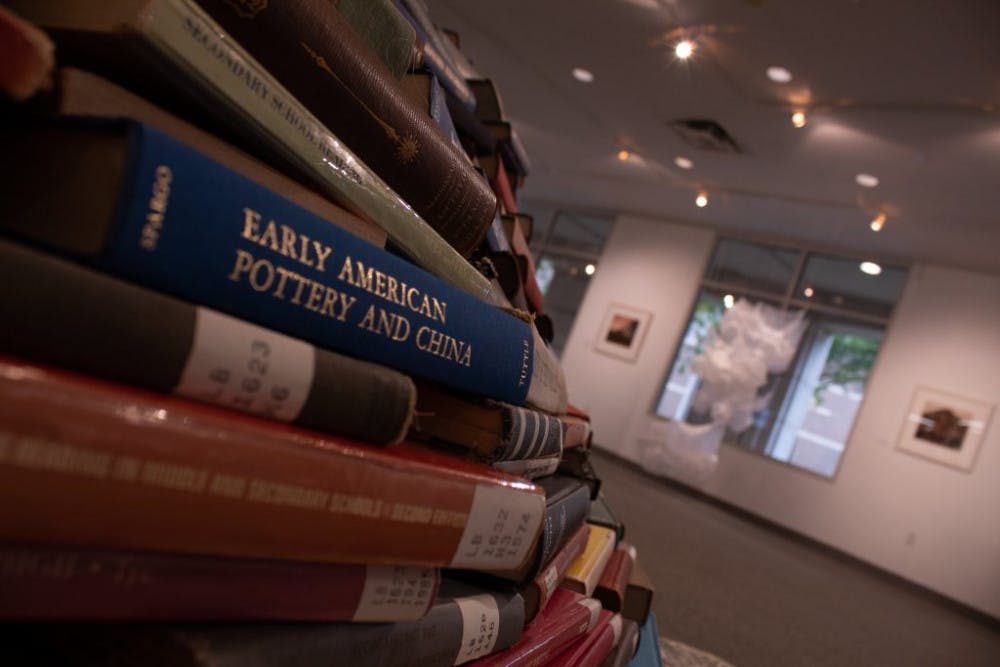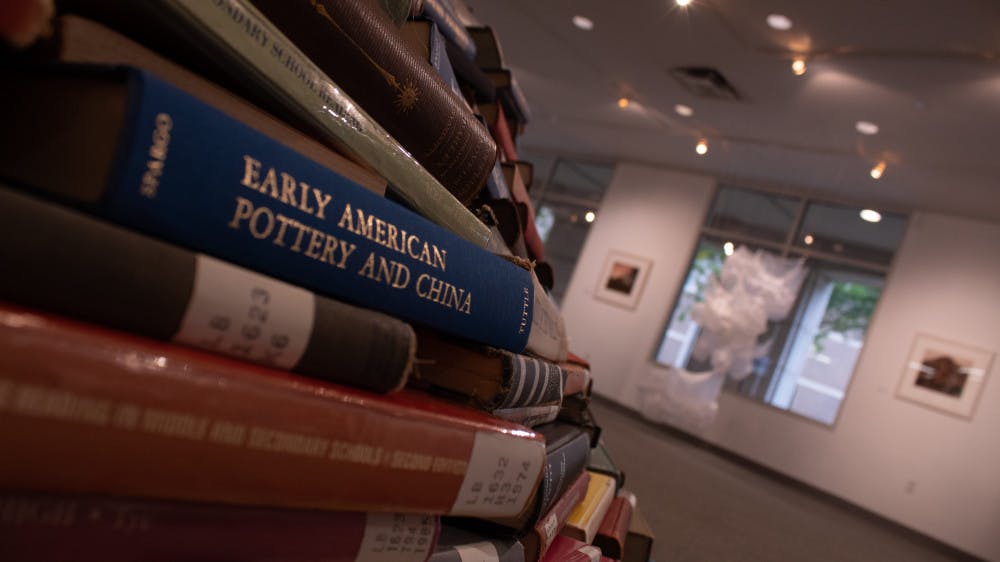On Sept. 12, the Walsh Gallery celebrated the opening of its newest exhibit called “Mounds, Piles & Massings.” The exhibit, which opened on Sept. 9, was curated by South Orange artist Greg Leshé in collaboration with the Pierro Gallery of the South Orange Village.
Leshé explained that the inspiration for the exhibit came from photographer John Pfahl, who has multiple photographs featured in the exhibit. He said Pfahl’s work inspired his own work, “New Jersey Pile Series #1-10.”
The exhibit is an audio-visual exploration into the human tendency to organize and amass matter. Some pieces rest on the floor, some closer to the ceiling with many more pieces in between. For some projects, viewers can walk in between and become surrounded by many levels and different stimulations of the senses, from audio to visual.

The exhibit is an audio-visual exploration into the human tendency to organize and amass matter.
Leshé explained the concept of amassing items. “A form based on piling materials is also primal,” he said. “It reveals a basic human tendency to want to order, stack, load, accurate, organize, construct, to build something that takes us away from our corporeal perspective, that rises upward.
“The basis of architecture – to project a marker form on the land, thereby affirming culture. Mound forms represented as pyramids, burial mounds, or modern rubble piles, whether sacred or secular, are evidenced in all phases of civilization.”
Jeanne Brasile, the director of the Walsh Gallery, noted that the gallery has had previous collaborations with the Pierro Gallery. “It’s a beautiful relationship between our two institutions,” Brasile said.
The Walsh Gallery previously worked with the Pierro Gallery in 2016 and with the current renovations at the Baird Center, where the Pierro Gallery is located, Brasile said she thought this would be a “wonderful” time to invite the Pierro Gallery to work on an exhibit at the Walsh Gallery.
The exhibit features a multitude of artists from the South Orange region to the international stage. Brasile said the Gallery is interested in “pairing local and regional artists with national and international artists to give them all an equal platform and also to provide unique perspectives.”
One of the artists featured in the exhibit is Deborah Jack and her series “Bounty.” Jack, a native of St. Maarten, a former Dutch colony in the Netherlands, uses her photography to take the viewer into the Great Salt Pond mines of Bonaire where salt was a cash crop and was mined by slave labor.
Jack said she hopes students will see the beauty of her piece because there is an intentional aesthetic to her piece. “A lot of these spaces where you have this historical trauma, they’re beautiful places, the landscape is beautiful and that sort-of why they end up being colonized – for the resources,” she said.
Jack said she wants students to see the beauty in her pieces but to also see the underlying messages and themes about extraction capitalism.
Brasile said she hopes students can broaden their perspectives from the event. She added that she hopes the exhibit will provide “food for thought” that will allow them to converse and think about how the socio-political ideas from the exhibit, relate to them on a personal level.
Melissa Esposito, a junior psychology and criminal justice major, explained her experience at the exhibit.
Esposito said, “[The exhibit] did an amazing job at capturing surreal and interesting moments that left the viewer not only with a lasting impression but also still gave the viewer the freedom to come to their own conclusions.”
Bianca Stover can be reached at bianca.stover@student.shu.edu.





